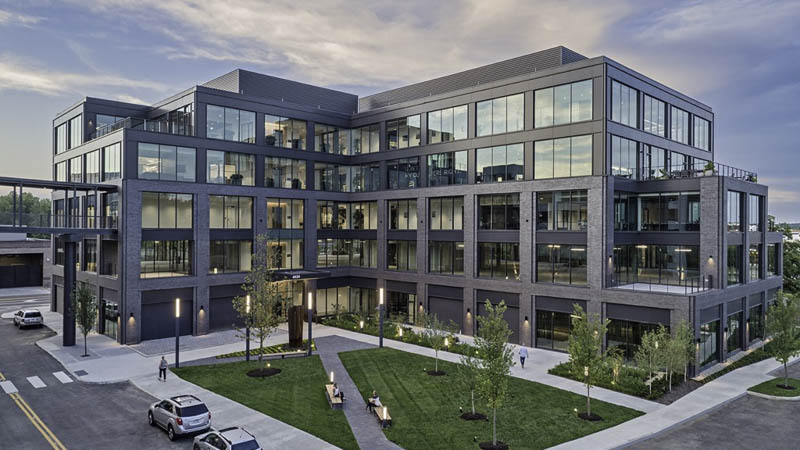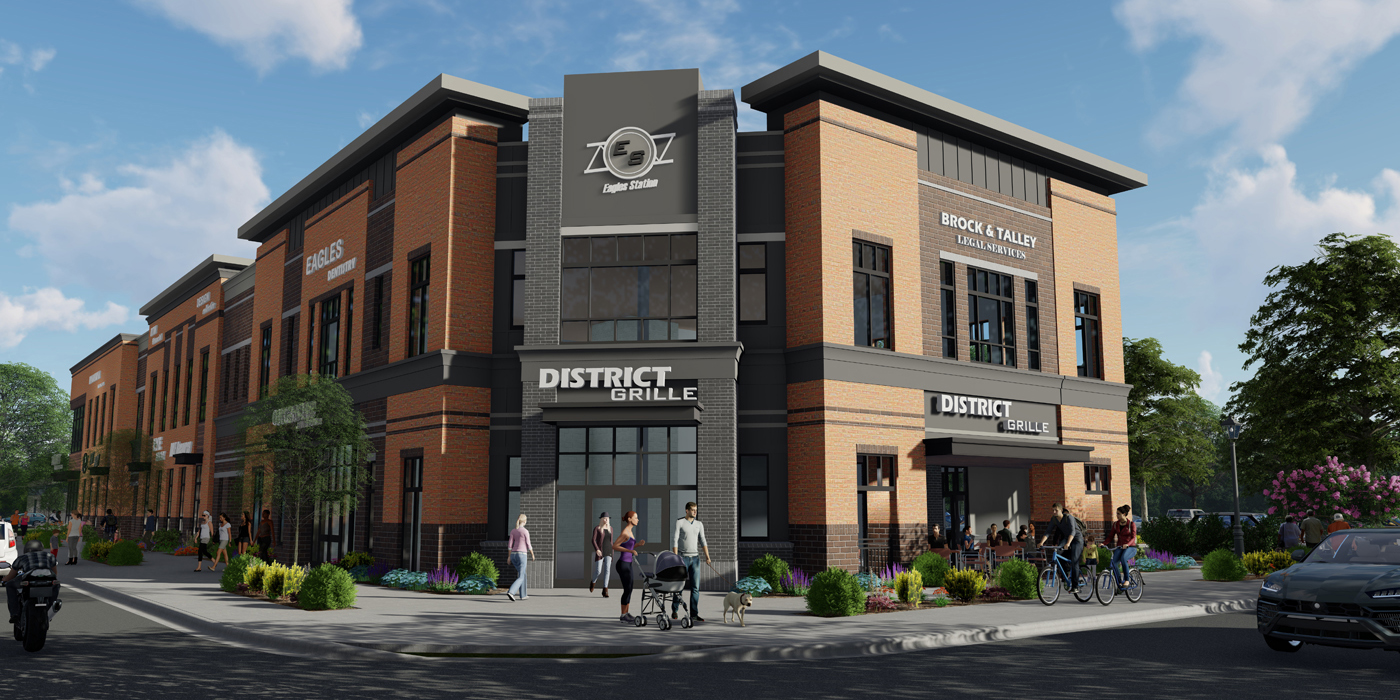commercial architects and Their Use of Sustainable Materials in Modern Developments
Unveiling the Comprehensive Providers Provided by Commercial Architects for Modern Advancement
Commercial Architects offer a critical function in contemporary development tasks. They mix style visual appeals with functionality while sticking to regulatory demands. Their experience expands past plain building and construction, incorporating sustainable methods and cutting-edge modern technologies. As they navigate complicated zoning regulations, Architects collaborate with numerous stakeholders to bring visions to life. This multifaceted method questions regarding the developing duty of Architects fit modern-day areas and the impact of their service future developments.
Comprehending the Role of Commercial Architects in Modern Advancement
In contemporary city landscapes, Commercial Architects play a vital function in shaping useful and aesthetic areas that fulfill varied company needs. Their proficiency expands beyond mere design; they navigate complex zoning laws, constructing codes, and ecological regulations. By working together with customers, they identify certain demands, guaranteeing that each task lines up with the customer's vision while additionally considering practical elements such as sustainability and cost-effectiveness. Commercial Architects are proficient at integrating cutting-edge innovations and products right into their designs, enhancing both the performance and energy effectiveness of buildings. They conduct detailed website evaluations to assess the potential obstacles and possibilities presented by a place. Additionally, efficient communication with specialists and various other stakeholders is important, making certain that the project progresses smoothly from conception to conclusion. Inevitably, Commercial Architects are important in producing areas that not only satisfy practical functions however likewise contribute to the overall character and vibrancy of city atmospheres.
Idea Style: Transforming Concepts Into Fact
Principle layout functions as a crucial stage in Commercial design, where cutting-edge layout services arise from innovative brainstorming. This process depends on collaborative ideation, uniting varied perspectives to fine-tune and enhance initial concepts. As ideas form, they change from abstract concepts into tangible architectural facts.
Cutting-edge Style Solutions
Transforming concepts into truth is the hallmark of cutting-edge style services in Commercial architecture. These remedies blend imagination with functionality, addressing the special needs of contemporary advancements. By leveraging innovative modern technologies and sustainable practices, Architects craft spaces that are not just visually appealing yet likewise effective and versatile. Emphasis on customer experience drives the style process, ensuring that environments foster performance and cooperation. Each job take advantage of a customized method, where principles are diligently established to reflect the customer's vision while considering future patterns. Cutting-edge style solutions additionally focus on flexibility, enabling for alterations over time as business needs progress. Ultimately, these strategies enhance the total value of Commercial spaces, making them essential in today's competitive landscape.

Collaborative Ideation Refine
Cooperation serves as the backbone of the ideation process in Commercial style, fostering imagination and technology amongst diverse stakeholders. Architects, customers, engineers, and neighborhood members take part in vibrant conversations, making certain that all perspectives are thought about. This inclusive strategy enables the expedition of numerous design principles, motivating one-of-a-kind remedies that line up with the task's vision. Through workshops and brainstorming sessions, ideas evolve and refine, changing first concepts right into concrete layouts. Innovation also plays a pivotal duty, with tools such as Structure Details Modeling (BIM) assisting in real-time cooperation and modifications. Eventually, this collaborative ideation procedure not only enhances the design end result yet additionally cultivates a feeling of possession and financial investment among all parties entailed, resulting in effective Commercial developments.
Zoning Evaluation: Browsing Laws and Compliance
As developers commence on new projects, comprehending zoning regulations is necessary to making certain compliance and preventing costly delays. Zoning evaluation plays a vital function in this process, as it entails evaluating neighborhood zoning laws that dictate land usage, developing elevation, density, and setbacks. Commercial Architects possess the proficiency to browse these complex guidelines, aiding clients determine allowable usages and any kind of necessary variations.
Sustainable Design Practices: Structure for the Future
Lasting design methods are increasingly crucial in the domain name of Commercial architecture, particularly as environmental worries remain to rise. Architects focus on environment-friendly products, energy-efficient systems, and layout strategies that minimize waste and environmental influence. Incorporating sustainable power resources, such as solar panels and see it here wind generators, allows structures to create their very own power and lower reliance on fossil fuels.Furthermore, sustainable layout stresses the importance of indoor environmental top quality. This includes utilizing all-natural light, improving ventilation, and selecting non-toxic products to improve resident health and efficiency. Green roofings and living walls are additionally popular attributes that add to biodiversity and urban cooling.Additionally, Commercial Architects commonly integrate water conservation strategies, like rain harvesting and drought-resistant landscaping. With these innovative strategies, they develop rooms that not just satisfy contemporary demands however additionally promote a lasting future, attending to the expanding demand for accountable advancement in the modern-day globe.
Job Management: Ensuring Timely and Effective Execution
Effective task monitoring is important for making sure that Commercial design tasks are completed on time and within budget. This role includes a variety of duties, consisting of the coordination of various stakeholders, timelines, and sources. Commercial Architects leverage their proficiency to develop in-depth task strategies that describe critical landmarks and deliverables, permitting systematic progression tracking.Regular go to this web-site interaction among group members and customers is vital, promoting openness and helping with timely decision-making. Risk management methods are additionally employed to identify possible obstacles early, making it possible for proactive options to be created. By using advanced job monitoring devices, Architects can keep an eye on task performance in real-time, making modifications as required to preserve performance.
Interior Decoration: Developing Useful and Aesthetic Spaces
Inside layout plays an important function in improving both performance and aesthetics within Commercial areas. Efficient room planning can enhance workflow and improve user experience, while aesthetic design concepts contribute to an aesthetically appealing atmosphere - commercial architects. Together, these aspects produce rooms that are not just functional however likewise motivating
Room Preparation Performance
While optimizing the energy of readily available space, Commercial Architects prioritize room preparation efficiency to produce both functional and visually pleasing atmospheres. This strategy includes cautious analysis of the spatial design to ensure suitable use every square foot. Architects take into consideration variables such as operations, availability, and all-natural light to boost use. By strategically placing furniture, tools, and workstations, they promote motion and interaction among individuals, advertising performance. Additionally, zoning various locations for certain functions aids in taking care of noise and privacy, creating an unified environment. Via reliable room preparation, Commercial Architects can transform restraints into chances, guaranteeing that each area meets the varied needs of its passengers while sticking to governing needs and industry criteria.
Aesthetic Style Concepts
Aesthetic layout concepts play an essential role in shaping environments that are not just functional however also aesthetically appealing. These concepts guide Commercial Architects in producing rooms that resonate with customers while enhancing brand identification. Trick aspects include balance, percentage, and harmony, which collaborate to develop a natural look. Color design and products are thoroughly selected to stimulate desired feelings and support the total motif. In addition, lights plays a crucial duty, affecting mood and exposure while highlighting building attributes. By these details incorporating these concepts, Architects assure that spaces are not only useful yet likewise inviting and motivating. Inevitably, reliable visual layout promotes a favorable user experience, motivating interaction and complete satisfaction in Commercial environments.
Partnership With Stakeholders: Cultivating Effective Collaborations
Successful partnerships in Commercial architecture rest on efficient cooperation with stakeholders, guaranteeing that every voice is listened to and valued. This collaborative method includes engaging various parties, including clients, professionals, and community members, throughout the layout and growth procedure. By promoting open communication, Commercial Architects can deal with issues, collect understandings, and align the task's vision with stakeholder expectations.The assimilation of varied point of views boosts imagination and development, leading to more functional and cosmetically pleasing designs. Normal meetings, feedback sessions, and workshops promote this discussion, permitting Architects to adjust their plans in action to stakeholder input. Additionally, establishing trust fund with transparency and accountability strengthens these partnerships, causing a smoother project execution.Ultimately, the success of contemporary developments depends upon the Architects' capacity to navigate and balance differing rate of interests, developing a collaborative environment that advertises common objectives and shared success.
Frequently Asked Inquiries
How Do Commercial Architects Take Care Of Budget Plan Constraints During a Task?

What Sorts of Software Do Commercial Architects Commonly Use?
Commercial Architects commonly make use of software such as AutoCAD for drafting, Revit for Structure Details Modeling, SketchUp for 3D modeling, and project administration devices like Microsoft Job to boost cooperation and streamline workflows throughout the design procedure.
Can Commercial Architects Aid With Getting Financing for Projects?
Commercial Architects can aid in obtaining funding for jobs by preparing comprehensive proposals, helping to express style visions, and supplying economic forecasts that can enhance the possibility of protecting needed financing from investors or banks.
How Do Architects Make Sure Security During the Building Refine?
Architects ensure safety and security during building and construction by implementing strenuous style criteria, coordinating with designers, carrying out regular website evaluations, sticking to local guidelines, and cultivating communication amongst all stakeholders to mitigate threats and promote a safe and secure workplace.
What Ongoing Assistance Do Architects Supply After Project Completion?
After task conclusion, Architects use ongoing assistance with maintenance appointments, performance analyses, and layout adjustments. They ensure buildings fulfill developing requirements, address prospective concerns, and keep compliance with policies, promoting a long-term relationship with customers.